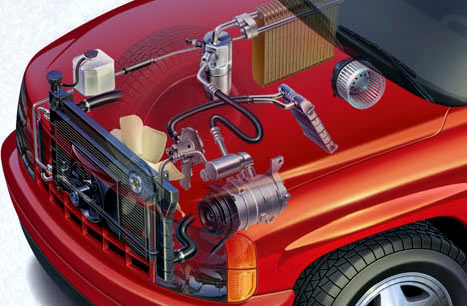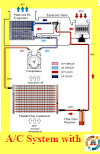Prior to
removal
and/or installation of the spare
part it must be verified that connections, fixings and other installation-relevant properties are identical.
When replacing components, always use new
O-rings suitable for the refrigerant.
The compressor oil has a strong hygroscopic effect. Thus, the system must be kept closed if possible and/or the
oil is
to be filled shortly prior to closing the refrigerant circuit only.
Prior to the installation, O-rings and seals are to be greased with refrigerant oil or special lubricants in order to facilitate installation. No other greases or silicone spray may be used as this results in immediate contamination of the new refrigerant.
For every opening of the refrigerant circuit the dryer must be replaced due to its strong hygroscopic effect. If dryer or accumulator are not replaced on a regular
base, the filter pad may decompose and silicate particles may be distributed in the entire system and cause severe damage.
The system connections should never remain open for an extended period of time, but should be immediately closed using caps or plugs. Otherwise, liquid would be entered together
with air into the system.
In order
to avoid damage to connection pipes and/or components, always use two wrenches when loosening and fastening the connections.
When routing tubes and cables make sure that no damage is possible caused by vehicles edges or other moving components.
When replacing a component
of the air conditioning system, the correct oil quantity in the system is to be ensured. Oil must be refilled or drained as needed.
Prior to refilling the system, it must be checked
for leaktightness. Next, the system is to be sufficiently evacuated (approx. 30 minutes) in order
to ensure that all humidity
is removed from the system.
After filling the refrigerant quantity specified by the vehicle manufacturer, the system is to be checker for proper function and leak-tightness (electronic leak indicator). At the same time, the high and low pressure values must be observed using pressure manometers and compared with the specified values. Compare the outflow temperature on the centre vent with the values specified by the manufacturer.
After the service connections are fitted with protective caps, the maintenance due date is to be indicated on an adhesive service label on the front cross member.
Information regarding the installation of air conditioning system compressors:




























